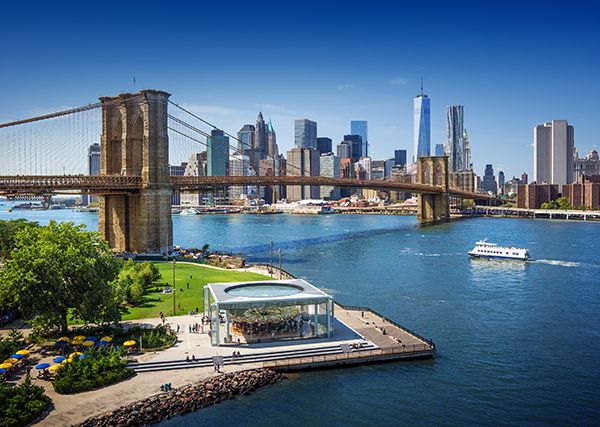New York City is home to 8.5 million people, with the population of the wider metropolitan area at over 20 million. As New York's population continues to grow, it raises questions on how the city will cope with such vast numbers.
This population increase will create many significant changes to the city and will, ultimately, put more pressure on its transportation infrastructure.
Due to its geography, New York City relies on a large number of bridges and tunnels — the Brooklyn Bridge, completed in 1883, is the oldest in use, and the Verrazano-Narrows Bridge, the comparative newcomer, opened in 1964.
The New York region is also home to three major airports — John F. Kennedy International, LaGuardia and Newark International — each with specific transportation challenges due to increasing demand, capacity constraints and access issues.
Expanding, or even maintaining, the current transit system is challenging, due to the region’s density. Former Port Authority of New York and New Jersey (PANYNJ) Chairman Chris Ward famously compared the task to a high-stakes game of "pick-up sticks". But the imperative of increasing the system’s ability to transport a growing population efficiently and safely is a real one, and some major initiatives are in various stages of planning and implementation:
- Second Avenue Subway (Phase 1) and East Side Access. As 57% of commuters take transit, and the proportion is growing, these two long-planned expansions to the subway and commuter rail are seen as essential investments.
- Tappan-Zee, Goethals, Bayonne and Kosciuszko bridges. These major projects will result in complete rebuilds of the first three bridges, and a raising of the fourth, to accommodate increasingly large container vessels.
- Airport redevelopments.Both Newark and LaGuardia airports are undergoing major improvements, and some form of transit access is being widely discussed for both.
- Lower Manhattan transit improvements. Several major subway stations have been completed in the last few years, including Fulton Transit Center and the World Trade Center PATH station which had been destroyed on September 11, 2001.
The list of major transportation investments in the region either ongoing or planned is considerably longer, and includes the redevelopment of Penn Station, increasing the capacity of railway tunnels between New Jersey and Manhattan on the North-east Corridor, and the construction of a new facility to replace the existing Port Authority Bus Terminal.
These projects are an indication of both the dynamism of the region and the challenges to have transportation infrastructure accommodate, and even encourage, economic growth.
As the region continues to grow, the challenges of providing essential transportation services will be a primary concern for various layers of government, transportation authorities, private sector entities and, of course, residents.
Steer Davies Gleave has been fortunate to have been involved in several important projects that exemplify how regional actors have been responding to these challenges.
Transportation investments to serve the outer boroughs
Residential and commercial growth outside Manhattan has accelerated, and nowhere more so than along the Queens and Brooklyn East River waterfront. Steer Davies Gleave has been a key advisor to several governmental and transportation entities in the planning for the Brooklyn Queens Connector, a planned 16-mile (26 km) streetcar serving the booming waterfront. Previously, Steer Davies Gleave was the advisor working with New York City in planning the expansion of the East River Ferry, currently being implemented.
Planning for the future of commuter rail
Long Island Rail Road and Metro-North Railroad are the two largest commuter rail providers in North America. Steer Davies Gleave has developed ridership and revenue forecasting models for both that will provide the basis for the service and budgetary planning, as well as be a crucial input into their fare policy planning.
Airport access
Airport access has been an issue of particular consideration for the regional policy-makers. Steer Davies Gleave is currently working with the PANYNJ in planning for rail connections to Newark Liberty International Airport, and previously led a study to provide passenger ferry service to LaGuardia Airport.
Measuring the economic benefits of transit investments
Steer Davies Gleave has been providing extensive economic advisory support to several regional entities to guide their decision-making. An analysis of economic benefits of hazard mitigation for the country’s largest ferry service, Staten Island Ferry, led to a US$192 million grant from the Federal government. Steer Davies Gleave developed an extensive analysis of the agency’s capital plan for the Metropolitan Transportation Authority, which oversees most transit service in the region, measuring the economic benefits of both major capacity investments and state-of-good repair programs.
Steer Davies Gleave is proud of our contributions since opening our New York office in 2012, and look forward to our continued role in addressing the city's transportation challenges for its ever-growing population.
